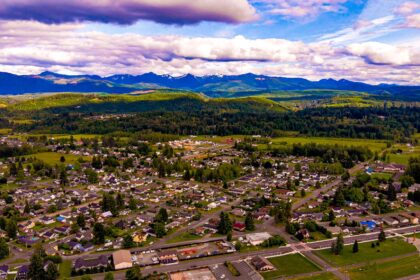Oakland is the largest city and the county seat of Alameda County, California. Take a look below for 20 awesome and interesting facts about Oakland, California, United States.
1. A major West Coast port, Oakland is the largest city in the East Bay region of the San Francisco Bay Area, the third largest city overall in the San Francisco Bay Area, the eighth most populated city in California, and the 45th most populated city in the United States.
2. With a population of 440,646 as of 2020, it serves as a trade center for the San Francisco Bay Area; the Port of Oakland is the busiest port in the San Francisco Bay, the entirety of Northern California, and the fifth busiest in the United States of America.
3. An act to incorporate the city was passed on May 4, 1852, and incorporation was later approved on March 25, 1854. Oakland is a charter city.
4. Oakland’s territory covers what was once a mosaic of California coastal terrace prairie, oak woodland, and north coastal scrub.
5. Its land served as a resource when its hillside oak and redwood timber were logged to build San Francisco.
6. The fertile flatland soils helped it become a prolific agricultural region. In the late 1860s, Oakland was selected as the western terminal of the Transcontinental Railroad.
7. Following the 1906 San Francisco earthquake, many San Francisco citizens moved to Oakland, enlarging the population, increasing its housing stock, and improving its infrastructure.
8. It continued to grow in the 20th century with its busy port, shipyards, and a thriving automobile manufacturing industry.
9. The earliest known inhabitants were the Huchiun natives, who lived there for thousands of years. The Huchiun belonged to a linguistic grouping later called the Ohlone (a Miwok word meaning “western people”).
10. In Oakland, they were concentrated around Lake Merritt and Temescal Creek, a stream that enters the San Francisco Bay at Emeryville. Throughout Oakland, Colleges, community organizations and companies have dedicated their respects to the Ohlone tribe by doing land acknowledgements.
11. In 1772, the area that later became Oakland was colonized, along with the rest of California, by Spanish settlers for the King of Spain. In the early 19th century, the Spanish crown granted the East Bay area to Luis María Peralta for his Rancho San Antonio.
12. The grant was confirmed by the successor Mexican republic upon its independence from Spain.
13. Upon his death in 1842, Peralta divided his land among his four sons. Most of Oakland was within the shares given to Antonio Maria and Vicente.
14. The portion of the parcel that is now Oakland was called Encinar (misrendered at an early date and carried forward as “encinal”) —Spanish for “oak grove”—due to the large oak forest that covered the area, which eventually led to the city’s name.
15. According to Stanford University historian Albert Camarillo, the Peralta family struggled to keep their land after the incorporation of California into the United States after the Mexican–American War. Camarillo claims the family was the victim of targeted racial violence. He writes in Chicanos in California, “They lost everything when squatters cut down their fruit trees, killed their cattle, destroyed their buildings, and even fenced off the roads leading to the rancho.
16. Especially insidious were the actions of attorney Horace Carpentier, who tricked Vicente Peralta into signing a ‘lease’ which turned out to be a mortgage against the 19,000-acre rancho. The lands became Carpentier’s when Peralta refused to repay the loan he believed was fraudulently incurred. The Peraltas had no choice but to abandon the homesite they had occupied for two generations.”
17. During the 1850s—just as gold was discovered in California—Oakland started growing and further developing because land was becoming too expensive in San Francisco. People in China were struggling financially as a result of the First Opium War, the Second Opium War, and the Taiping Rebellion, so they began migrating to Oakland, many of whom were recruited to work on railroads. However, the Chinese struggled to settle because they were discriminated against by the white community and their living quarters were burned down on several occasions.
18. The majority of the Chinese migrants lived in unhealthy conditions in China and they often had diseases, so plague spread into San Francisco even though the Chinese were thoroughly inspected for diseases upon their arrival to San Francisco.
19. In 1851, three men—Horace Carpentier, Edson Adams, and Andrew Moon—began developing what is now downtown Oakland. In 1852, the Town of Oakland was incorporated by the state legislature. During this time, Oakland had 75–100 inhabitants, two hotels, a wharf, two warehouses, and only cattle trails. Two years later, on March 25, 1854, Oakland re-incorporated as the City of Oakland. Horace Carpentier was elected the first mayor, though a scandal ended his mayorship in less than a year.
20. The city and its environs quickly grew with the railroads, becoming a major rail terminal in the late 1860s and 1870s. In 1868, the Central Pacific constructed the Oakland Long Wharf at Oakland Point, the site of today’s Port of Oakland.




